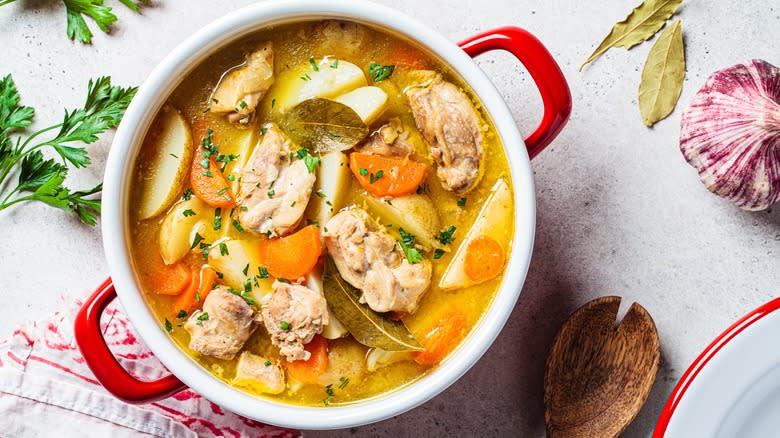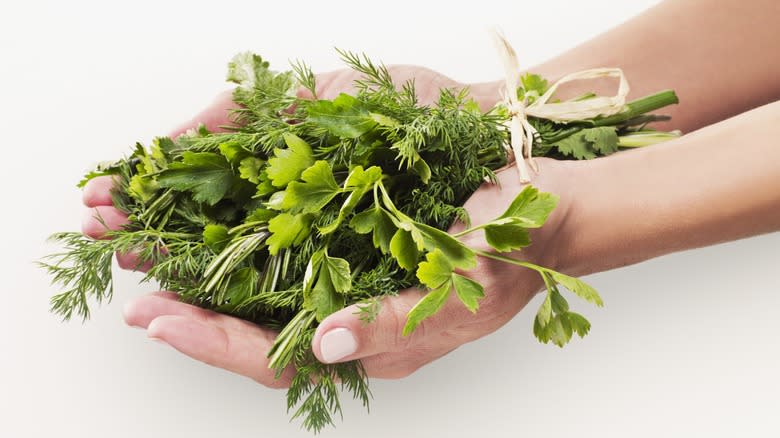Crush Herbs In Your Hand Before Adding To Stews For Far More Flavor

Whether you're preparing a meaty, vegetable, or seafood stew, adding herbs to the dish goes a long way to creating a delicious and aromatic serving. And if you're a fan of fresh herbs, like us, don't fret over the prep time; it only takes a few seconds to enhance those spicy, fresh flavor notes. The secret is to crush the herbs with your hands before adding them to your stew. This small and simple step can significantly boost flavor, turning an ordinary stew into a delightful culinary experience in no time.
When you crush herbs, you release their essential oils which are the heart and soul of the herb's flavor and aroma. You're unlocking more of these oils than you would by simply throwing the herbs in whole. To do this effectively, start by selecting your herbs. The soft variety of fresh herbs is ideal for this method as they are easier to squeeze than their woody counterparts and contain more oils than their dried version. So think basil, mint, coriander, or other preferred soft herbs.
Once you've picked your herbs, take a small handful and gently press them between your palms. You'll know you're doing it right when you can smell the herbs' fragrance becoming more pronounced. After crushing the herbs, add them to your stew and finish your cooking process. But that's not all.
Read more: 21 Delicious Ways To Use Up Leftover Rice
More Ways To Get The Most Flavor From Your Fresh Herbs

While crushing herbs is a great way to release their flavors, knowing when to add them to your stew is equally important. Generally, woody herbs like rosemary and thyme can be added early in the cooking process. Their robust nature allows them to withstand longer cooking times, and their flavors will meld beautifully with your stew as it simmers. On the other hand, delicate herbs such as parsley, cilantro, or basil should be added towards the end of cooking. Their soft texture and subtle flavors are best preserved when they're exposed to heat for a shorter duration.
Additionally, preserving the flavors of your fresh herbs starts with proper storage. Herbs like moisture, but they don't like being wet. A good storage method is to trim off the stems, wrap them in a damp paper towel, and store them in a Ziploc bag in the refrigerator. Alternatively, prop the trimmed herbs in a glass or jar of water like a bouquet, then wrap them in a plastic bag securing the bag in place over the glass with a rubber band, and place it in the fridge or on your countertop. These simple storage methods not only preserve the herbs' freshness but also keep their flavors intact. By understanding these nuances of preserving and using fresh herbs, you can extract the most flavor from fresh herbs and transform your stews and other dishes from ordinary to extraordinary.
Read the original article on Tasting Table.

